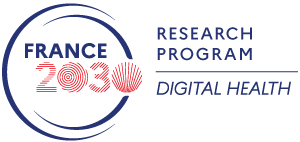Societal Assets For E-healthcare Patient pAthWays
Coordinating Partners : Carine Milcent
Coordinating institution : CNRS
Regulators patients, healthcare professionals, use and acceptation, re-appropriation (re-use), diversion of use, socio-economic determinants, vulnerability , clinical information, IA, health care system, algorithm, pathology : oncology, cardio-vascular affections, mental health affections
Controlling hospital expenditures and improving healthcare quality seem a priori irreconcilable. Depending on healthcare regulation, the incentive can be on cost reduction at the expense of quality or the other way around. Western populations face an increase of longevity which mechanically increases the number of chronic disease patients to manage. Therefore, finding the right balance between the two is a most important issue in many developed or developing countries Digital health is a major opportunity to optimize the management and costs of our health care systems. We propose an multidisciplinary approach, a multidimensional approach, a mixed method to study the health digital input and digital intake. The goal is then to assess the impact of AI and decision support tools in healthcare patient’s pathways. More specifically, we propose
1- A multidimensional approach with:
- Different dimensions include clinical, demographic aspects, socio-economic drivers (unemployment’s rate, income’s level, household’s type, ecological (life style, …), healthcare suppliers on the areas (with the optimal size to be determined);
- A study of different dimensions controlled by the databases used to define and describe the healthcare patient’s pathways;
2- A humanities and Social sciences approach, including economic approach, legal rules and ethical concerns (GDPR and the proposal of artificial intelligence Act):
- Use of existing database including administrative database but no exclusively;
- The economic, legal and ethical approaches will be mobilised through observational research methods, semi-directed interviews with different actors (Regulator – Care Professional – Patients called RPH) and focus groups with other actors (RPH);
- Two goals and challenges: With regard to digital health representation; and, exploring and estimating AI impacts on stakeholders practice and best practice (RPH) including the ethics European guidelines for trustworthy AI and a proposal for a regulation laying down harmonized rules on artificial intelligence (21 April 2021);
3- A computer sciences approach combining:
- Data analysis; healthcare patient’s pathways modeling from healthcare (administrative) databases, development of care pathways;
- Healthcare patient’s pathways modeling, development of methods of Operations Research to optimize patient’s pathways;
- Mature clinical and non clinical decision support systems (discrete optimization): the technology guides the stakeholder through evidence-based, patient-specific algorithms and guidelines for care, decision making in organization and management of care structures and their resources;
4- An integrative intersectional, multidisciplinary, and multi-level approach:
- Informal interactive discussions and dialogues between computer science researchers, economists, humanities scientists and social sciences researchers;
- Innovative approaches such as iterative approaches to develop, modify and re-think specific algorithms, to foster emerging new concepts and proposals, …;
- A social impact evaluation including experimental studies and legal concerns studies
| Laboratory or department, team | Supervisors |
| CES – UMR 8174 | CNRS, Paris 1 – Panthéon Sorbonne University , Paris School of Economics (PSE) |
| IRIS – UMR 8156 – U997 | CNRS, Inserm, USPN, EHESS |
| LIFAT – EA 6300 | Tours University, INSA |
| CERSA-UMR 7106 | CNRS, ASSAS – Paris-Panthéon-Assas University, |
| Centre Inria Lyon – Eq AistroSight | Inria, Lyon 1 University, HCL
Theranexus industrial partner |
| ARENES – UMR 6051, ERL-U1309 | CNRS, Inserm, EHESP |
| SESSTIM – U 1252 Inserm, U259 IRD | Inserm, IRD, Aix-Marseille University
french ministry of defence partner |
| Centre Borolli – UMR 9010 | CNRS, ENS Paris Saclay, Univ Paris Cité
Inserm and French Ministry of Defense partners |
| LIMOS – UMR 6158 | CNRS, ENSM St Etienne, Clermont Auvergne University,
INP Clermont Auvergne partner |
| LPNC – UMR5105 | CNRS, UGA, Savoie Chambéry University
CHU Grenoble partner |


